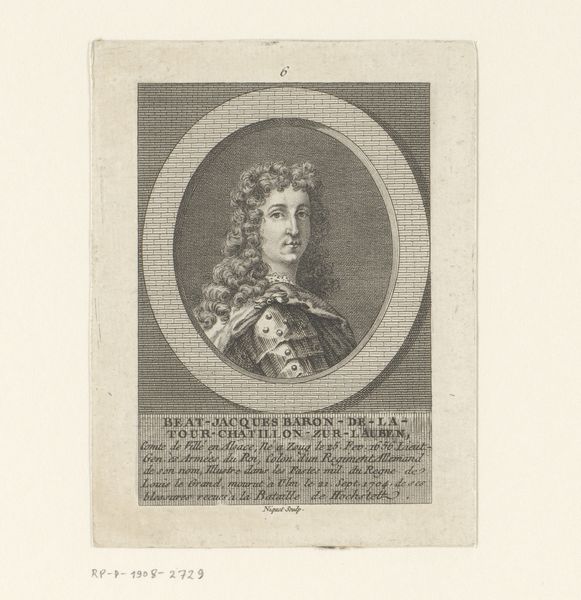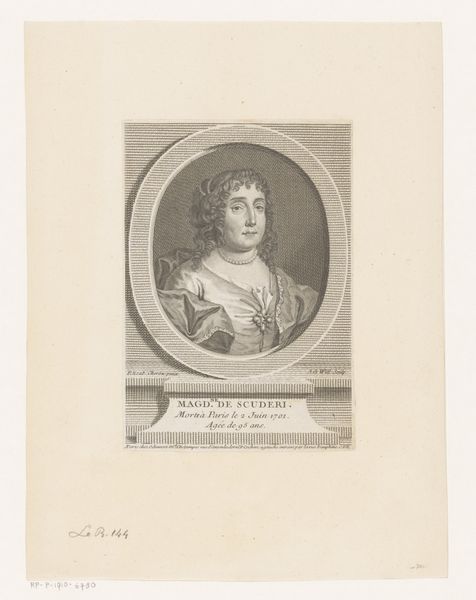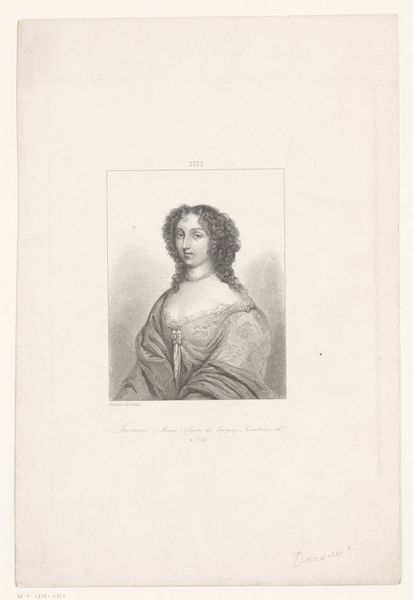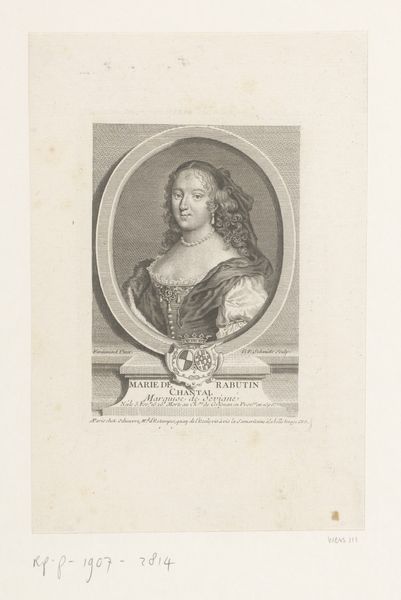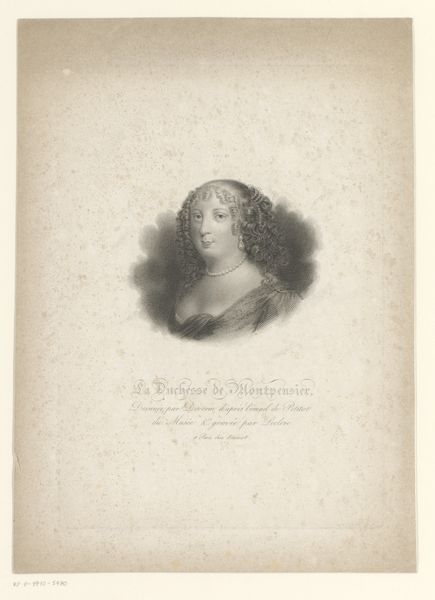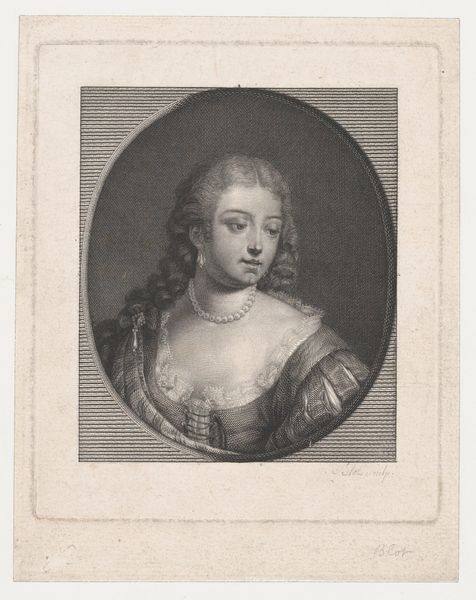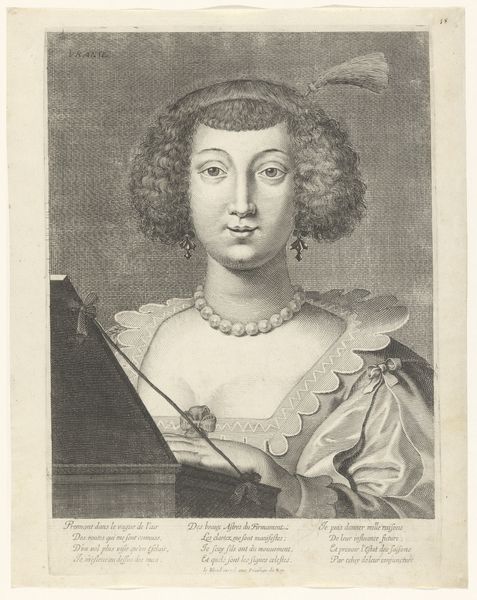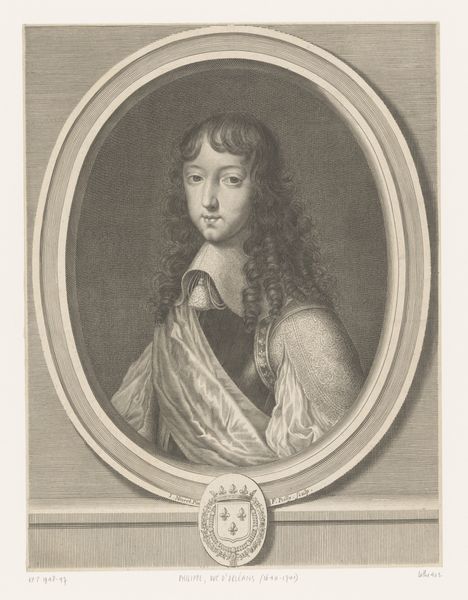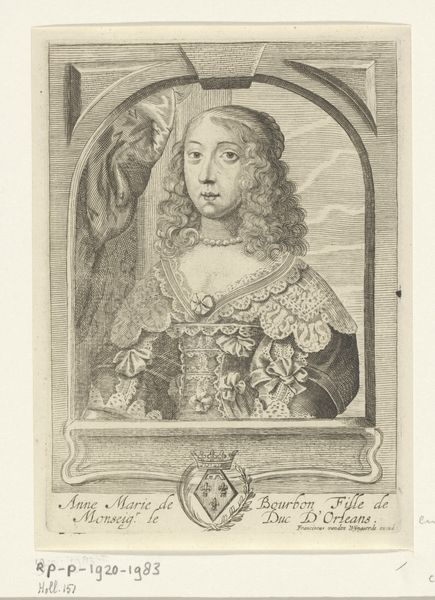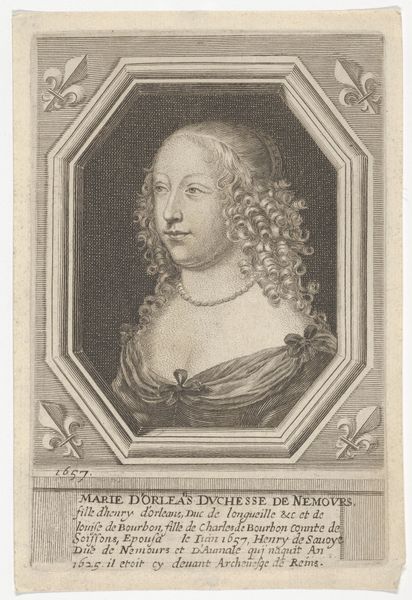
Dimensions: height 95 mm, width 91 mm
Copyright: Rijks Museum: Open Domain
Editor: Here we have Ernst Ludwig Riepenhausen’s "Portret van Maria Ruten", an engraving from between 1775 and 1840. It’s delicate work, capturing the woman’s image with incredibly fine lines. What do you see in it? Curator: I see the hand of the engraver, first and foremost. Consider the material process: the copper plate, the burin slicing through it, the ink forced into those grooves, and then the immense pressure transferring that image to paper. We’re not just looking at Maria Ruten; we’re looking at labor, skill, and the reproduction of image in the burgeoning print market. Think about the social context of producing and distributing such an item, particularly during a period of social and political upheaval. What statement do you think it's making through its chosen medium? Editor: I guess it's making it more accessible by choosing to make prints and not something like a painting... Was making it more available for common people the only intent, or maybe the print medium was supposed to have another effect? Curator: It's about visibility, wouldn’t you say? Prints allow for a wider distribution of images and ideas beyond the elites. While we often categorize “high art” versus printmaking, it is useful to challenge this divide. For instance, what kind of consumption might exist to turn ordinary people into patrons, what did it mean to possess a replica of nobility? To have a small paper item as a signifier of social advancement? Editor: That's true. It's less about artistic genius in a traditional sense and more about accessible image production, even for the working classes, giving this portrait power it wouldn't have as a single oil painting. Curator: Exactly. Thinking about it this way shows how materials and labor conditions can change the function and perception of an artwork completely. This wasn't simply about aesthetics; it was about social circulation and possibly self-advancement. Editor: I’m so glad you brought that to my attention; this helped see the artwork’s impact in a very different light! Curator: It was a very informative reflection for me as well.
Comments
No comments
Be the first to comment and join the conversation on the ultimate creative platform.

